Seeing Each Other in the Candle’s Light
There is a Yiddish folk-tale that tells of a foolish man who gets lost in the woods during Chanukah:
Having hoped to make it back to his home before sundown the man had attempted to take a short cut through the forest, only to find himself utterly lost when night fell. For hours he walked hither and thither, unsure of whether or not he was walking in the right direction, the wrong direction, or simply walking in circles – and above the chattering of the forest’s animals he could not make out any sounds that would point him in the direction of people.
Eventually, but only after thwacking his face against several branches and stepping into a very cold stream, he saw several spots of faint light glowing amongst the trees – and though he lacked the know-how to guide his course by the stars he was confident that where there was light there were likely to be people. Thus he made his way as hastily as he could in the direction of the lights, and as he could not see his way, the path he trod was quite noisy. Nevertheless, before long he emerged from the wood to find himself on the edge of a village, the outlines of which he recognized as his own. He could see that the points of light were several candles flickering in a menorah on a windowsill. Though it was late he could not in good conscience return home without thanking the resident and so he knocked on the door and waited patiently for someone to come to answer. As he was certain that it was quite late he was somewhat surprised that the door should crack open so quickly.
“Oh! It’s you,” the voice behind the door said, relieved, “have you also been awakened by the great noise coming from the forest?”
“I was the great noise coming from the forest,” the late-night hiker replied, “I became lost, I only found my way out because you had placed your menorah in the window facing the woods and I saw the candles burning. I owe you my thanks! It is a Chanukah miracle!”
“A Chanukah miracle?” the voice from behind the door asked with a laugh, “It would have been a miracle if you had found your way from the woods without assistance. This? Miraculous? No, it just reminds me that I should always put my menorah on that windowsill instead of the one on the other side of the house. On the day when we can no longer rely on each other to set out candles, that we may find our way, on that day we shall be in need of miracles.”
* * *
In an era of electric light and glowing screens – there is something rather quaint about candlelight. When winter arrives and the sun sets earlier it prompts a reliance on modes of illumination that will light a space more fully than what one might achieve with a couple of candles. Chanukah is something of an odd holiday – it is at once a celebration about which many have some vague knowledge, even as the holiday has come to enjoy a privileged position that seems to have more to do with the time of year during which it falls. To the rejoinders one periodically hears about recognizing the true meaning of a holiday – the Chanukah equivalent would likely be some equivalent of “let’s keep the revolution in Chanukah.” After all, the miracle that Chanukah recalls is a successful (albeit brief) rebellion – the bit about the oil that astonishingly lasts for eight days is simply a sanitized version. Regardless of what one may argue is the miracle at the holiday’s core – what may be particularly useful is to think for a moment about the main symbol of the holiday: the menorah.
In the midst of winter, when night comes early, Chanukah is a holiday where you light candles.
This winter is proving to be a particularly dark one – and to maintain an altogether different disposition suggests that one is miraculously unaware of the state of the human world and the state of the ecological world. When the news breaks away from reporting on the latest celebrity scandal or new tech-gizmo – we are confronted with a litany of tragedies that are muddled by the farcical attempts of commentators to downplay ethical concerns and imperatives in the name of expedience, ideology or self-promotion. It is dark outside, the darkness has followed us inside, and for far too many people this darkness has come to nestle deep within – steadily inoculating and inuring us from the unceasing flow of tragedies. It is a time of year, this year in particular, when there is much to be said for creating light. In the darkness of winter and in the starkness of the news it becomes more and more difficult for us to see one another – but lighting some candles may help.
But how do we know when we are seeing each other? How do we know that the candles have allowed us to see other people, instead of just creating more shadows on the wall? The philosopher and theologian Martin Buber wrote in many of his works about the way in which people encounter one another, and encounter the world. Buber formulated two sets of relations: “I-Thou” and “I-it.” For Buber:
“The primary word I-Thou can be spoken only with the whole being. Concentration and fusion into the whole being can never take place through my agency, nor can it ever take place without me. I become through my relation to the Thou; as I become I, I say Thou. All real living is meeting.” (26)
The relationship of I-Thou is one wherein an individual (an “I”) comes to recognize the other person not as an object, but as a subject, as another human being, as another “I.” To see the other person not as a caricature, a vague amorphous being, but as another human being – this is what occurs in a relationship of “I-Thou” (also sometimes translated as “I-You”). Within the relationship of “I-Thou” we are able to see that “real living is meeting” by meeting with another person and recognizing that just as we are each an “I” so too must this other person be an “I.” Thus we relate to them, we meet them, we interact with them, on this level as another “I” – when we see ourselves as “I” and when we seek treatment and recognition of this fact we are able to fully see that others place a similar demand on us. To recognize yourself as “I” is to desire to be treated as such (as a “thou”) by others, and it therefore demands that we recognize the desire of others to be treated as “Thou” by us. As Buber writes:
“The inborn Thou is realized in the lived relations with that which meets it…Through the Thou a man becomes I.” (39)
Whereas the relationship of “I-Thou” is a reciprocal relationship in which the “I” recognizes itself in the “Thou” and the “Thou” recognizes itself in the “I” – the pair “I-It” represents a different relationship. Buber explains that we confront the world in terms of both types of interactions – and both are quite necessary – after all, when we interact with a table we experience it as “it;” however, the “I-it” is problematic when it becomes the way we interact with other human beings. Within the world of “It” the faculty to say “I” is slowly eroded, and as it is eroded so too is the ability to see others as “Thou.” Within the “I-It” relationship others (be they people, other living creatures, or inanimate items) become objects that are manipulated and used – they are in one sense encountered but they are not truly “met ” – for we do not encounter ourselves in the “It” we encounter only our ability to make use of the “It.” What we see, as Buber wrote is that, a person:
“is free and consequently creative only so long as he possesses, in action and suffering in his own life, that act of the being—so long as he himself enters into relation. If a culture ceases to be centered in the living and continually renewed relational event, then it hardens into the world of It, which the glowing deeds of solitary spirits only spasmodically break through.” (61)
The question which this raises for us in the cold, in the darkness of this winter is whether or not we are relating to those in our world as “Thou” or as “It?” When we read, see or hear of injustices is our response to think of these people (often unnamed) as each being an “It” to be manipulated by a regimes of power and control, or do we see in each of them a reflection of our own humanity? Is the other individual, like you, an “I” or have they become just another “It?” Granted, in our present age, it has become all too easy to conceive of another person as being an “It” instead of a “Thou.” If “real living is meeting” than it certainly seems that we are doing less and less direct “meeting.” Instead our interactions come to be ever more mediated by devices and screens and apps – we have become so accustomed to encountering the “Thou” (the other person) through the “It” (the technological device) that it becomes all too easy for the “Thou” to be rendered into a flat image on the screen. A similar experience takes place when we see, hear or read reports that turn groups of people into amorphous others about whom we are encouraged to solicit an opinion as if this group is a mass of “Its” instead of a coming together of many “Thous.” While many are still able to make the necessary move to see the “Thou” we see all about us people (who are themselves “Thou”) who seem wholly content to see others only as “It.” We have become shuttered within the world of objects, the world of things, a world of “It” and as a result we find it ever more difficult to recognize the “Thou” – and by extension our own ability to say “I.”
A menorah – even when it is fully lit – does not generate particularly much light, but its very smallness is therefore all the more powerful. As an individual, as a single “I,” a person cannot truly illuminate the entire world, but every individual can help bring more light – can engage in “glowing deeds.” The wonderful thing about a lit candle – as the lighting of the menorah demonstrates- is that a lit candle can go on to light other candles.
Lighting a candle is not a miracle, nor for that matter is remembering to light a candle a miracle. The miracle is seeing other faces illuminated by the candle’s light.
Works Cited
Buber, Martin. I and Thou. New York: Scribner Classics, 2000.
Related Content
Living Within Justice is not Living With Injustice


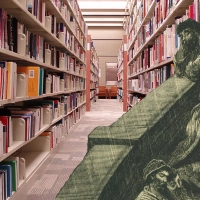
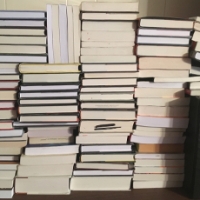
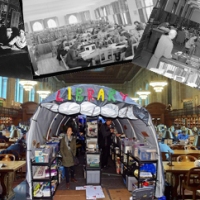
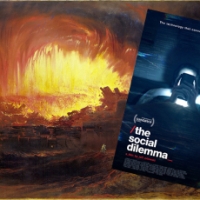

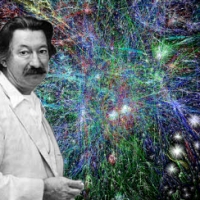
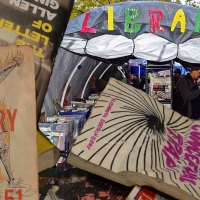
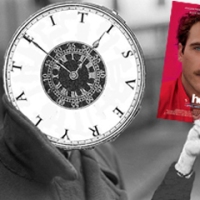

Reblogged this on Bookmouse.